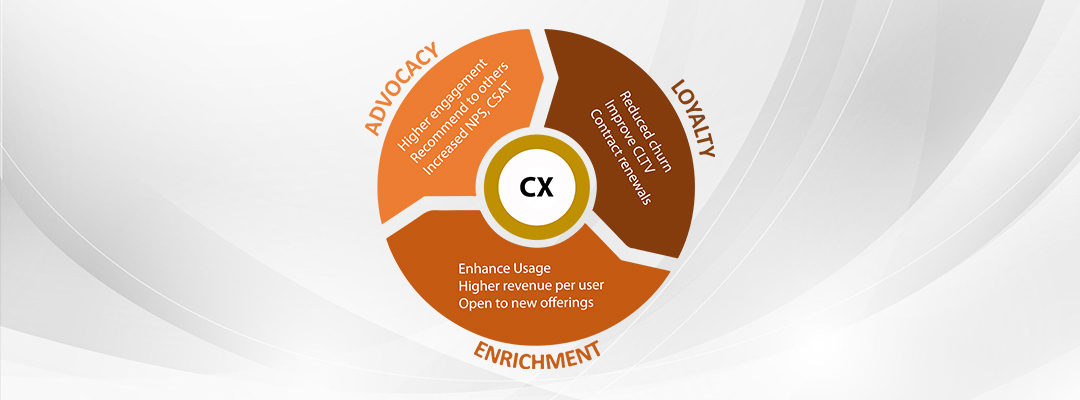Blogs
Services
CX, The Wheel of Fortune
Feb. 09, 2023

-- By CB Rajesh--
“As you turn the wheel of CX with
empathy and hope, First spin overwhelms you with expectations and grievances,
Second spin sprinkles trust and gets your worth higher, Third spin honors your
name and swell your caravan.”
On one of those unassuming days, I received a survey from a
brand I have been engaging with for years. As usual, the questions in the
survey were related to my satisfaction with a recent transaction, and I happily
gave them a thumbs-up! To my surprise, another link popped up and asked whether
I would buy their yearly membership for exclusive benefits. This put me in a
fix, and even before I could reason with myself on an additional spend, I had
already clicked it, and the payment option was blinking for my next swipe.
The exhilaration of thumbs-up was so high that I ended up
subscribing to it. I never had to regret my decision even once post facto as
they served even better. Sometime later, I found myself promoting this brand to
my friends and family as an ardent fan. In short, this brand moved me from
loyalty to enrichment and advocacy. They kept focusing on me despite being a
promoter and extracting more value; this is what I call a classical CX: the
wheel of fortune at play where you gain on each cycle.
It is natural for any organization transacting with B2C or B2B
customers to measure customer satisfaction periodically. The measurement tools / CX metrics could vary depending on the strategy and
suitability of the business. Once the feedback is received, how do we deal with
it? We mostly dive into fixing issues of dissatisfied customers, and evolved
ones deploy service recovery models to win back. The majority of our attention
gets directed toward detractors or unhappy customers. Instead, can we also
focus our energies on promoters and satisfied customers? This segment
offers a huge opportunity to enhance new usage, uses & users if targeted
smartly with customized offers. The idea is to create more value without diminishing
experiences.
I am a proponent of replicating our strengths and hence highly
recommend a promoter-driven program alongside fixing issues, processes, and
technology to improve customer feedback. The idea here is to focus on the
customers who are satisfied with your product or services and giving you a
promoter; why not focus on creating more promoters by replicating insights from
satisfied customers. In short, do not convert your CSAT or NPS programs
exclusively focusing on detractors; we must have the plan to sustain, expand the
satisfied base and improve customer lifetime value (CLTV).
The initial phases of the CX journey are a discovery process;
here, the organization and its people understand the feedback and create an
issue redressal mechanism. This stage is more transactional, and as the process
matures, it gets upgraded from support and service to experience-related
actions. The enhanced customer experience increases customers’ likelihood to
remain with the brand, driving retention substantially and protecting current
revenues.
This stage can be achieved through,
1. Quality of the product at the right price
2. Reducing friction during engagements
3. Creating loyalty through emotions
The second phase is measuring customer experience, knowing our promoter base and the key levels behind
their satisfaction. We need to then focus on how we can increase their wallet
share. Hence it is critical to identify avenues to increase usage and new uses
through smart promotions. What is important here is that we focus on value
creation for both the customer and the organization. This will require us to
find answers to the following questions,
1. Who are our promoters?
2. What are the reasons for their satisfaction?
3. Can we replicate the best practices?
It is essential to assess customer needs using feedback and
applying intelligence to create customized products and services by showing
enhanced benefits to customers. e.g. once, I received an email from my telecom
provider to enroll on a higher rental plan to save on international
calls/roaming, which resulted in an overall cost saving. This was a sudden
spurt of usage last year, and they wouldn’t have noticed without an in-depth
analysis. There is always an opportunity to analyze customers’ habits and usage
patterns to identify fringe benefits that can be used to create a tailor-made
offer to a satisfied customer. A time-bound and effective communication
strategy to promote these customized solutions are also imperative to its success.
The third phase involves using the power of promoters as our
brand ambassadors and acquiring new customers through their clout. Once we
reach the stage of advocacy, it is about adding value creation through smart
incentives for referrers & referees. There are numerous ways to use this
set of customers for onboarding new users and promoting the brand. A few are
listed below:
1. User referrals
2. Product or service testimonials
3. User reviews
4. Social media shares
5. User forums
6. Community events
In summary, some of the recommended best practices are,
1. Survey all, this might be a relationship-building opportunity
2. Get a bigger data sample for a better data science model
3. Stay focused on customers instead of scores
4. Always close the loop
5. Measure the value of promoters
“As you turn the wheel of CX with empathy and hope, First spin overwhelms you with expectations and grievances, Second spin sprinkles trust and gets your worth higher, Third spin honors your name and swell your caravan.”
